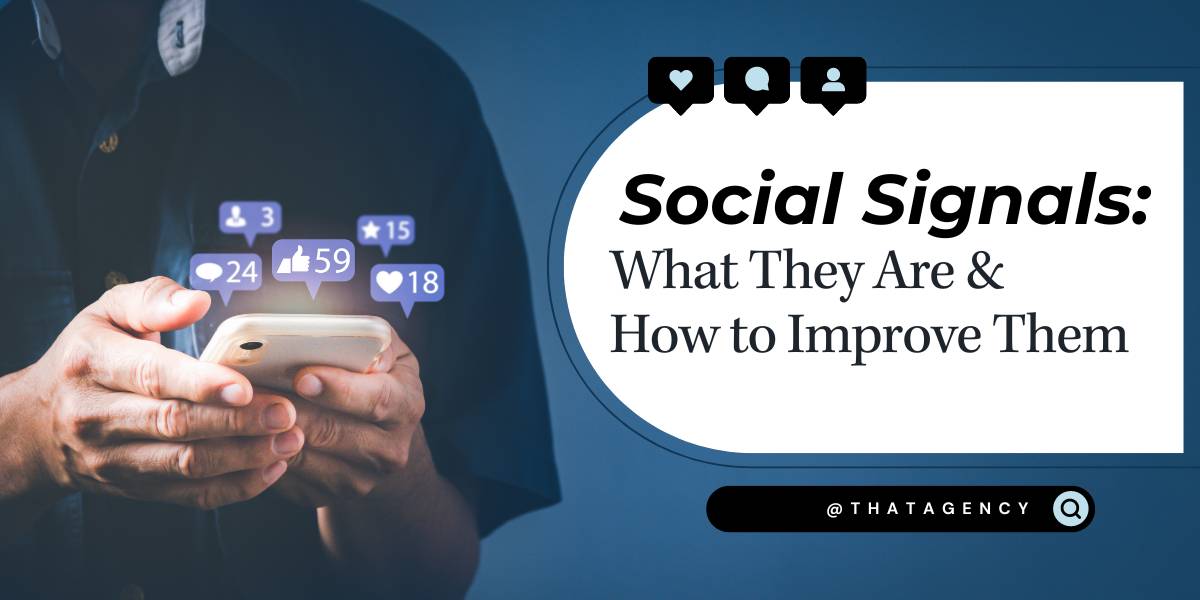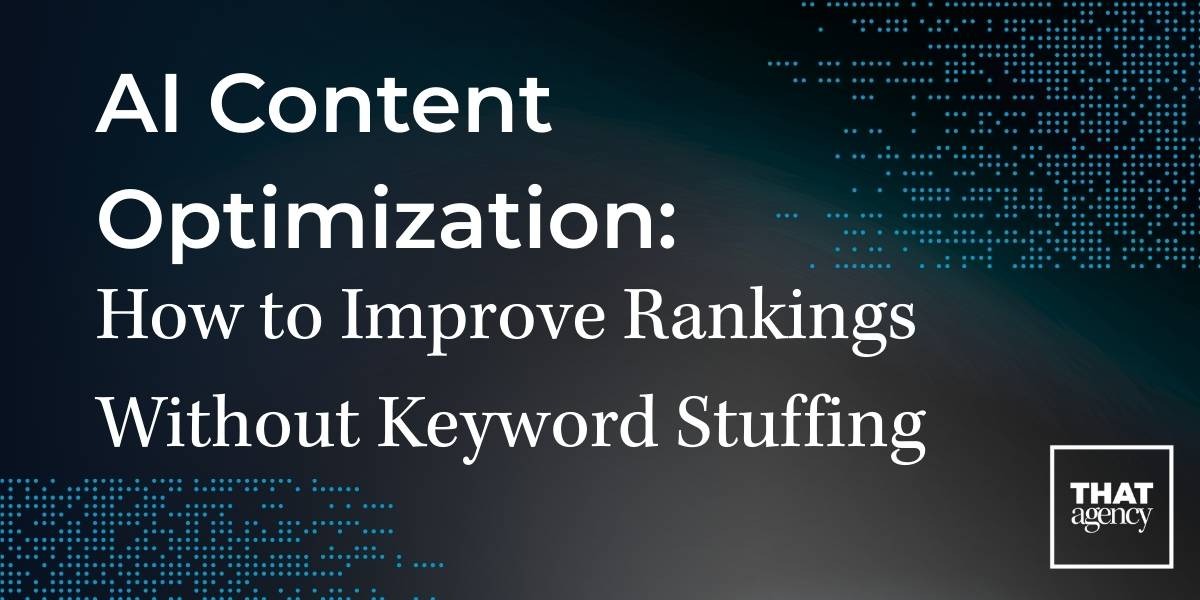Your social media posts are more powerful than you think. Every like, share, and comment you receive isn’t just a sign of engagement—it’s a signal that can shape your brand’s online success. What if those everyday interactions were the key to climbing the ranks on search engines and attracting more traffic to your website? Understanding how social signals impact SEO could be the hidden advantage your business needs to dominate the digital space.

What Are Social Signals?
Social signals are the interactions and engagement that happen when people interact with your social media content. These can be actions like:
- Likes
- Shares
- Comments
- Retweets
- Followers
These actions tell you and others how well your content is connecting with your audience. They reflect how much influence your brand has on platforms like Facebook, Twitter, Instagram, LinkedIn, and more. The more engagement your content gets, the more visible and influential your brand becomes on social media.
But why do social signals matter?
Social signals are different from other types of digital metrics, like website traffic, because they measure direct interaction with your brand. Social media engagement shows what people think about your brand in real time. For example:
- Likes tell you that your audience enjoys your content.
- Shares show that your content is valuable enough for people to spread to their own networks.
- Comments reflect that your audience is invested in what you’re saying, enough to start a conversation.
- Followers indicate that people want to keep up with your content over the long term.
How Social Signals Work with SEO
Even though social signals aren't a direct ranking factor for Google’s search algorithm, they still influence your SEO in important ways. Here’s how social signals and SEO are connected:
- Wider Reach = Higher SEO Impact: When people engage with your content (by liking, sharing, or commenting), it reaches a larger audience. The more people who see and engage with your post, the more likely it is that your brand will be discovered by new users.
- More Engagement = More Backlinks: A post that gets a lot of engagement is more likely to be picked up by other websites. When other sites link to your content, those backlinks boost your SEO ranking.
- Traffic Boosts SEO: Social media can drive traffic to your website, especially if your posts include links. Increased traffic shows search engines that your website is valuable and relevant. This is a strong SEO signal.
- Brand Awareness = SEO Authority: A brand that has strong social signals (lots of followers, shares, etc.) builds trust and authority. Search engines recognize this authority and reward it by pushing your content higher in the search results.
Why Social Signals Matter
Let’s take a closer look at why social signals are so important for your brand and SEO:
- Brand Awareness
- Social signals help build brand awareness. When people like or share your posts, they help spread the word about your brand to a larger audience.
- Example: A Facebook post about a new product that gets hundreds of shares increases your visibility far beyond your immediate followers, exposing your brand to a new audience.
- Website Traffic
- Social signals can drive more traffic to your website. Posts that include links to your site can encourage people to click through to learn more about your business.
- Example: A tweet linking to your latest blog post may get retweeted multiple times, sending more users to your website.
- Backlinks
- Strong social signals increase the likelihood of earning backlinks from other sites. Backlinks are when other websites link to your content, and they are a crucial factor for improving your SEO rankings.
- Example: A well-received Instagram post about an industry trend could get picked up by bloggers or journalists, who may link to your website as part of their content.
- User Engagement
- Search engines like Google prioritize websites that offer a good user experience, and social signals show that people find your content valuable. The more engagement your content gets, the more it tells Google that users enjoy interacting with your brand.
- Example: A LinkedIn post with many likes and comments signals to Google that your content is useful and worth sharing.
How Do Social Signals Impact SEO?
Here are some common questions that readers may have:
Q: Do social signals directly affect my SEO ranking?
A: Social signals don’t directly influence your Google ranking, but they help create conditions that improve your SEO. For example, when your content gets shared widely on social media, it can lead to more backlinks, increased website traffic, and more credibility for your brand—all of which do impact your SEO rankings.
Q: How can I increase my social signals to improve SEO?
A: You can improve social signals by creating high-quality, engaging content that your audience will want to interact with. You can also encourage shares, comments, and likes through social media contests, asking questions, and posting consistently.
Key Takeaways
Social signals may not be a direct ranking factor in SEO, but they play a huge role in improving your overall digital presence. When people interact with your social media content, they help expand your reach, increase website traffic, and build your brand's authority—all of which lead to stronger SEO performance.
By focusing on improving your social signals, you’ll see a ripple effect that enhances your online visibility and overall SEO efforts. The more engaged your audience is on social media, the more likely your content is to rank well in search engine results.
How to Improve Social Signals
Now that you understand the importance of social signals, let's go over some ways to enhance them. Improving your social signals can boost your online presence, drive traffic to your website, and improve your SEO. Here are some detailed strategies to help you get started:
1. Create Shareable Content
One of the most important ways to improve social signals is by creating content that people want to share. But what exactly makes content shareable? It’s about producing content that connects with your audience emotionally, answers their questions, or solves their problems.
Here are some ways to create shareable content:
- Solve Problems: If your content provides solutions to common challenges your audience faces, they’re more likely to share it. For example, a how-to guide or a list of helpful tips.
- Answer Questions: People often turn to social media for quick answers. Creating content that directly addresses common questions in your industry will encourage your audience to share it.
- Entertain: Funny, emotional, or thought-provoking content gets shared frequently. Memes, relatable stories, and inspiring videos often go viral because they resonate with people's feelings.
Tip: Use visuals, infographics, or videos to make your content more engaging. Studies show that posts with images or videos get far more engagement than text-only posts.
Common Questions:
- How do I know what my audience finds helpful?
- Pay attention to the questions they ask in comments or on forums, and use tools like Google Trends or Answer the Public to see what’s popular in your industry.
2. Work with Influencers
Collaborating with influencers can significantly boost your social signals. Influencers have built-in audiences that trust their opinions, so when they share your content, their followers are likely to engage with it. This can result in more likes, shares, and comments on your posts.
Here’s how to effectively work with influencers:
- Choose the Right Influencers: Look for influencers whose audience matches your target market. If their followers are interested in your niche, their recommendations will carry more weight.
- Collaborate on Content: Ask influencers to share your existing content or, even better, co-create new content that aligns with both your brand and theirs.
Tip: Micro-influencers (with 1,000 to 100,000 followers) often have higher engagement rates than larger influencers because they interact more personally with their audience.
Common Questions:
- Do influencers cost a lot?
- It depends on the influencer’s reach. Micro-influencers are often more affordable and can deliver great results.
3. Optimize Your Social Media Profiles
Your social media profiles act as the front door to your business online, so it's important to keep them optimized. A well-maintained profile makes it easier for people to find you, connect with you, and engage with your content.
Here’s how to optimize your profiles:
- Update Your Bio: Make sure your bio is clear and explains what your business does. Include relevant keywords to help search engines and users find you.
- Include Links: Always add a link to your website, blog, or other important pages so users can easily visit your site.
- Use Consistent Branding: Your profile picture, cover photo, and overall design should match your brand’s look and feel to create a cohesive experience across all platforms.
Tip: Use tools like Linktree to include multiple links in your bio, allowing followers to explore your website, blog posts, or other social media channels from one place.
Common Questions:
- How often should I update my profiles?
- Review your profiles at least once a quarter to ensure all information is up-to-date, especially if your services or contact details change.
4. Post Regularly
To keep your audience engaged and boost your social signals, you need to post regularly. However, consistency doesn’t mean flooding your followers with content. Quality should always come first.
Here’s how to post regularly and effectively:
- Plan Your Content: Use a content calendar to plan and schedule your posts. This will help you maintain a consistent posting schedule without scrambling for ideas at the last minute.
- Find the Right Frequency: Experiment with how often you post to see what works best for your audience. Some businesses do well with daily posts, while others may post a few times a week.
Tip: Quality over quantity is key. Don’t post just to meet a quota—ensure every post offers value to your audience.
Common Questions:
- How do I know when to post?
- Use social media analytics tools like Facebook Insights or Instagram Analytics to see when your followers are most active and schedule your posts for those times.
5. Encourage Interaction
Getting your followers to engage with your content is crucial for improving social signals. You want them to comment, share, and react to your posts. This kind of engagement tells social media algorithms that your content is worth sharing more widely.
Here are some ways to encourage interaction:
- Ask Questions: Asking your audience for their opinions or experiences can spark conversation. For example, if you’re in the food industry, ask, "What’s your favorite dish to cook at home?"
- Run Polls or Contests: People love participating in polls and contests. Use these tools to engage your audience while also gaining insights into their preferences.
- Respond to Comments: Show your followers that you’re listening by replying to their comments. This builds a stronger connection and keeps them coming back for more.
Tip: Include calls to action (CTAs) in your posts, such as “Comment below” or “Share if you agree,” to guide users into interacting.
Common Questions:
- What if no one is interacting with my posts?
- Try changing up your content. Posts that are more engaging—like questions, behind-the-scenes looks, or user-generated content—tend to get more interaction.
6. Use Hashtags
Hashtags are a simple yet powerful way to increase the visibility of your posts. They make it easier for people to find your content, even if they’re not following you directly. When used correctly, hashtags can help boost engagement and improve your social signals.
Here’s how to use hashtags effectively:
- Choose Relevant Hashtags: Stick to hashtags that are relevant to your post and industry. Using popular but unrelated hashtags can make your posts look spammy.
- Mix Popular and Niche Hashtags: Use a combination of trending, widely-used hashtags and niche-specific hashtags that target a smaller but more engaged audience.
Tip: Research trending hashtags using tools like Hashtagify or Instagram’s Explore page to find the most effective ones for your posts.
Common Questions:
- How many hashtags should I use?
- It depends on the platform. On Instagram, 10-15 hashtags can be effective, while Twitter posts usually perform best with 1-2 hashtags.
7. Cross-Promote Your Content
Don’t limit your posts to just one platform. By sharing your content across multiple social media channels, you increase its reach and improve your chances of engagement.
Here’s how to cross-promote effectively:
- Repurpose Content: Share the same piece of content in different formats across platforms. For example, a blog post can be shared as a Twitter thread, an Instagram post, and a LinkedIn article.
- Link Your Accounts: Make it easy for users to follow you on multiple platforms by linking your social media accounts in your bio or posts.
Tip: Use social media scheduling tools like Buffer or Hootsuite to streamline posting across platforms at the best times for maximum engagement.
Common Questions:
- Should I post the same content on all platforms?
- Yes, but adjust the format and tone for each platform. What works on Instagram might need tweaking to fit the professional tone of LinkedIn or the brevity of Twitter.
By applying these strategies, you’ll not only boost your social signals but also improve your overall online presence. Social signals play a key role in SEO and can greatly impact how people and search engines view your brand.
Social Signals and SEO: The Key Takeaway
While social signals might not be a direct ranking factor in SEO, they do have a big impact on how your content is perceived by search engines. The connection between social signals and SEO comes down to engagement—more shares, likes, and comments can lead to more traffic, backlinks, and better SEO performance.
Final Thoughts
Improving social signals can make a huge difference in how your brand performs online. By using these strategies, you can boost your engagement, increase your visibility, and enhance your SEO performance.
Ready to improve your social signals and SEO? Contact THAT Agency to learn more about how we can help you build a digital marketing strategy that works.
Editors Note: This blog was originally published on 2/16/24 and updated on 10/7/24 for accuracy.




